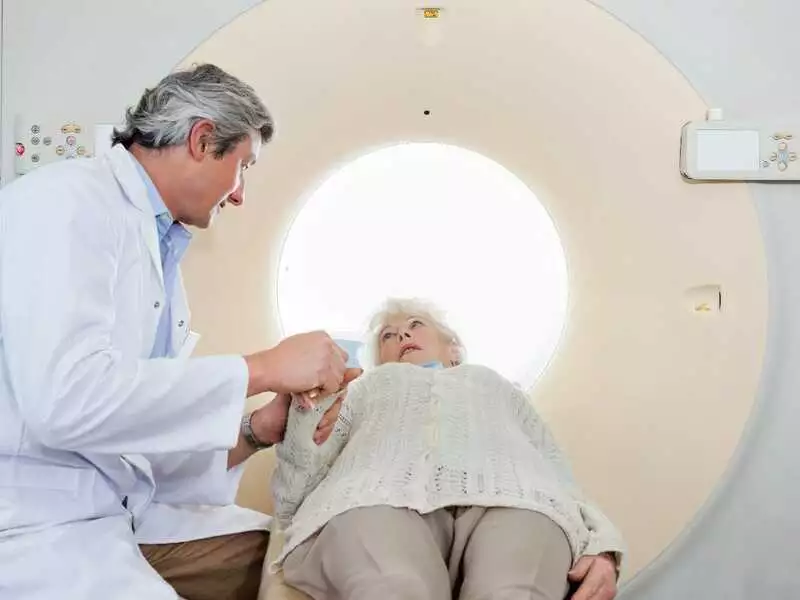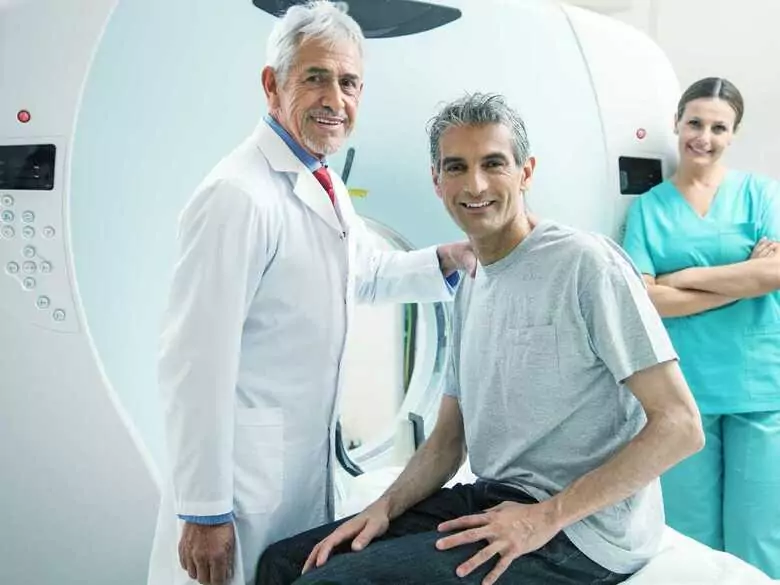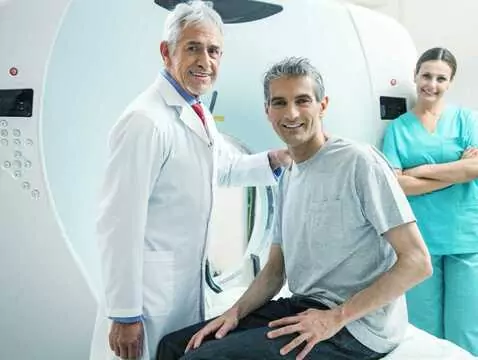Neurodegenerative diseases are increasingly prevalent in the elderly population. The vast majority of patients undergo imaging studies that show brain structures, but functional studies, which include PET/CT, are increasingly being used. With this test, it is possible to learn about the function (and dysfunction) of the brain in the context of glucose metabolism - the main driving force behind brain structures. PET/CT has therefore become very useful in the context of the differential diagnosis of dementias.
The diagnosis of dementias is an extremely complex procedure and relies mainly on differential diagnosis. Functional tests such as PET/CT are becoming increasingly important for this type of diagnosis. These examinations are extremely useful as they clearly indicate the areas of brain activity during glucose metabolism, which means that they show the activity of specific areas in the brain - which in turn is very important information for specialists to determine the type of disease.
Dementing diseases
Observations indicate that the number of dementing diseases is increasing among the elderly population, which generates the need to implement the earliest possible diagnosis. An accurate diagnosis is a very good chance for the patient to implement treatment and avoid early structural degeneration.
Among the main causes of dementia in the elderly, there are mainly two conditions: Alzheimer's disease (AD), responsible for about 65% of cases, and dementia with Lewy bodies, which is responsible for another 10-15%. Other conditions leading to dementia include frontotemporal degeneration vascular dementia, as well as other less common conditions.
The vast majority of people with suspected dementia require an imaging study such as an MRI or CT scan. These are structural examinations to exclude intracerebral pathologies that may cause similar symptoms.
Another type of test is functional tests that assess glucose metabolism in the brain. We are talking about tests such as PET/CT, which are used when there is clinical doubt and facilitate the differential diagnosis of dementia diseases.

photo: panthermedia
PET/CT examination
Positronemission tom ography/computed tomography (PET/CT) is a test based on advanced nuclear medicine technology, using radiopharmaceuticals that emit β+ radiation.
Glucose is the basic food for our brain and, consequently, the study in question allows the assessment of local glucose consumption, which becomes a marker of synaptic activity and density.
The test itself is a complex medical procedure and requires special conditions.
Before administering the radiopharmaceutical, the blood glucose concentration must be determined, which, if a brain scan is undertaken, should be below 140 mg. The start of the medical procedure is the intravenous administration of the radiopharmaceutical at a dose of 200-250 Mbq, after which the patient should be awake for about 30 minutes, i.e. eyes open and in a quiet, calm and slightly darkened room to minimise brain activation.









